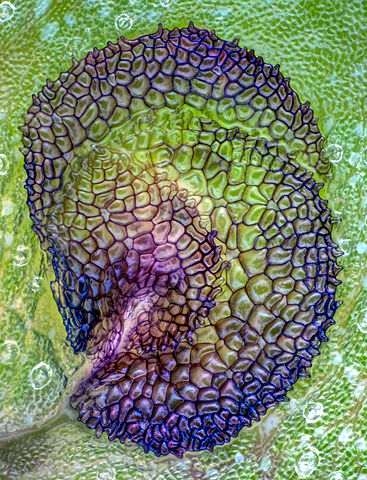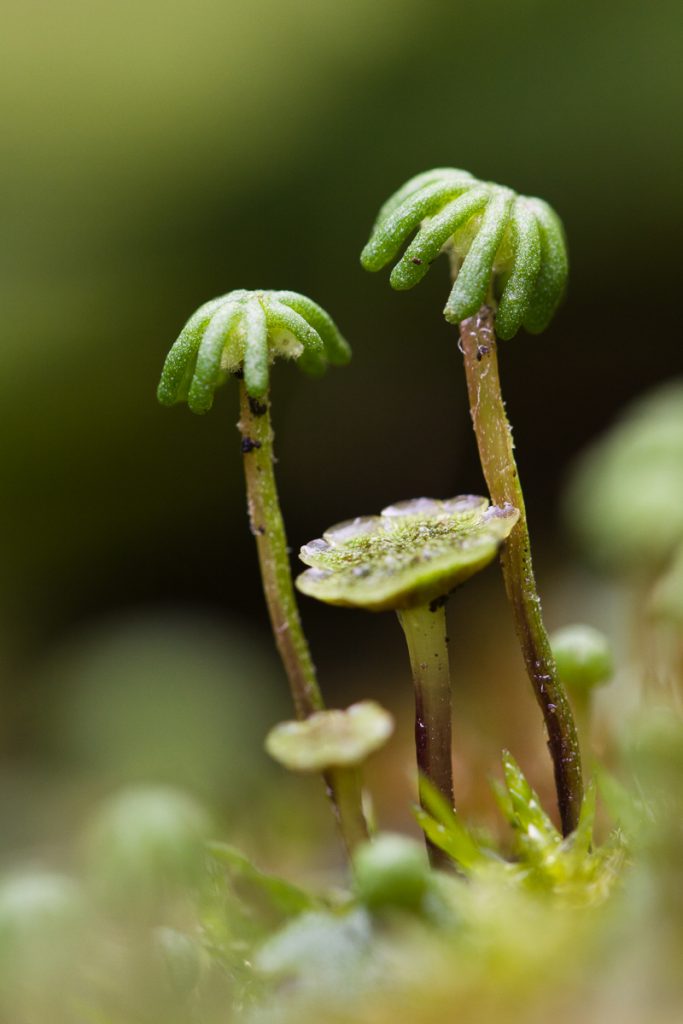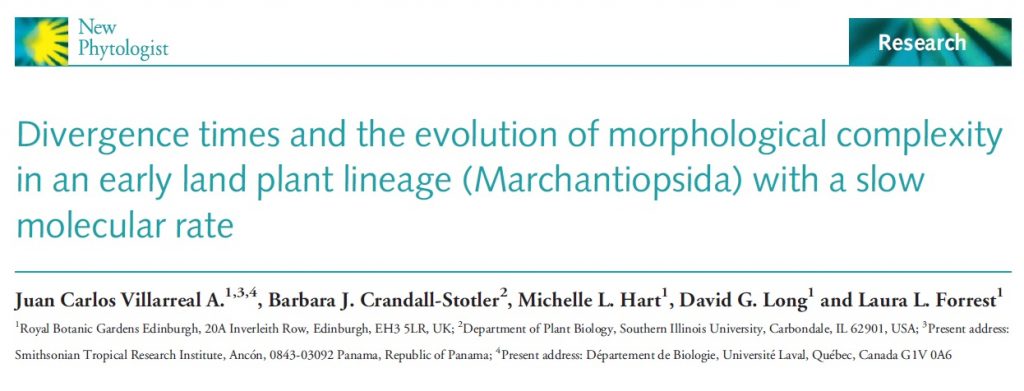One of the earliest plastid genomes to be sequenced, in the late 1980s (Ohyama et al.), was that of Marchantia polymorpha, one of the commonest liverworts around town, and an increasingly widely used model organism for genetic research. The complete mitochondrial genome followed, with a key publication by Oda et al. in 1992. The research on both organellar genomes came from Kyoto University, Japan.
When we were generating a DNA sequence matrix for the complex thalloids, we also included GenBank sequences from the published genome sequences for both these organelles (mitochondrial loci nad1, nad5 and rps3 and plastid loci atpB, cpITS, psbA, psbT-psbH, rpoC1, rbcL and rps4), to see how they compared with sequences from the three subspecies of Marchantia polymorpha that are found in the United Kingdom (subspecies ruderalis is the weedy plant that is commonly found in paving cracks, flowerbeds and plant pots).
The results of the analyses (Villarreal et al. 2015) were rather unexpected: the plant from GenBank didn’t cluster with our Marchantia polymorpha accessions, but instead with a Marchantia paleacea accession from Mexico. Admittedly, both species form a clade, but there’s a convincing amount of genetic distance between them.

Marchantia polymorpha ventral scales; photograph by Des Callaghan. Licensed under CC BY-SA 4.0 via Wikimedia Commons
Helene Bischler-Causse (1989, 1993) separated Marchantia into sections based on morphological characters of the plants, placing Marchantia polymorpha in section Marchantia, and Marchantia paleacea alone in section Paleaceae, due in part to differences in the way the scales on the underside of the thallus are arranged, as well as spore morphology. Now it seems that the organelle genome sequences that have, for the last 1/4 century, been thought to be from Marchantia polymorpha, are in fact from this lesser known (but also widespread) species, Marchantia paleacea.
(Kijak et al.’s research at Mickiewicz University in Poland shows a similar picture; although their study is still unpublished, a poster from the group is available to download here.)




Oosterlynck Patrik
Great work! I wonder if you have any clue on the origin of the ‘Marchantia polymorpha var paleacea’ from the Genbank? Since it was mistaken for Marchantia polymorpha I wonder if the species could be present in UK or elsewhere in Europe?
Best regards
Patrik Oosterlynck
Laura Forrest
Patrik – the material that was identified as Marchantia polymorpha came from Japan, where Marchantia paleacea is know to occur. We have DNA barcode sequences from 30 or so UK collections of Marchantia polymorpha, covering the three subspecies that are recognised here, and have not found M. paleacea hiding in there, although GBIF has records of collections in southern Europe http://www.gbif.org/species/2688573 – perhaps as the climate warms we may find it creeping north.